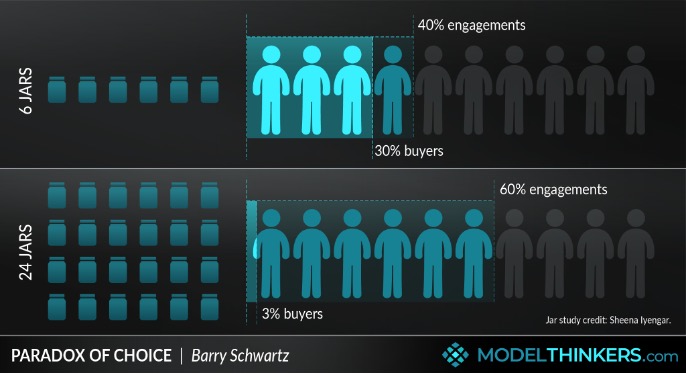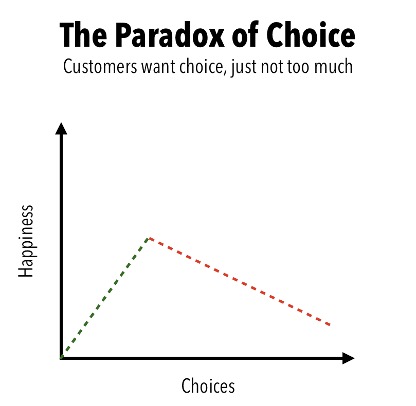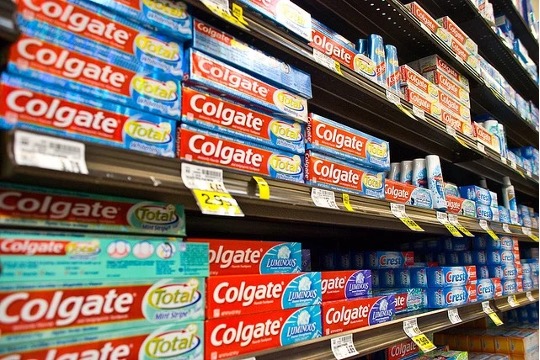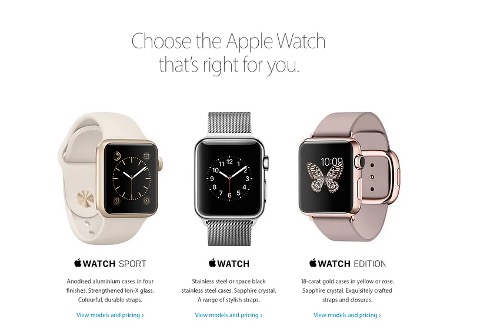Have you ever found yourself stuck in a loop of endless Netflix scrolling and have no idea what to watch next? Or have you considered delving into the world of investments, only to be overwhelmed by the sheer abundance of choices that have left you paralyzed with indecision? And then there are times, while using an app for online shopping, you get lost in the sea of commodities, struggling to decide what to buy.
Can you relate to any of these situations?
An abundance of options can induce anxiety, making every decision seem like a potential mistake, leading to a state of inaction. Turns out, this impression is caused by a psychological concept known as the Choice Overload Effect. It is that feeling of uneasiness you experience when you know so much that you feel like doing nothing at all because any action seems like the wrong one.

The Choice Overload Effect
According to the Choice Overload Effect, also known as Overchoice, having too many alternatives can be undesirable since it may be overwhelming and confusing and make it challenging to make a good choice. For many, having too many options paralyzes them and prevents them from making any decisions at all. Even worse, it may make individuals feel less satisfied with their decisions compared to when there were fewer options.
The Paradox of Choice
While having options is generally viewed as a good thing, having too many can complicate decision making and make people feel less happy with their final choice even when it is a good one. This paradox serves as an indicator that having too many options might have an unfavourable impact on decision-making abilities and general satisfaction.
Regrettably, there are not many indications that this problem will get better. Our society is now predominantly digital. Nearly everything is available to us online today. In the light of the current circumstances, it becomes increasingly difficult to overcome the choice paralysis.
Analysis Paralysis
A condition described as “analysis paralysis” occurs when a person overthinks an issue or problem and becomes indecisive. Essentially, analysis paralysis is a specific indication of the larger issue known as the choice overload effect. People may engage in detailed analysis and contemplation when offered an excessive amount of options, which, unfortunately, can further impair their capacity to decide. The decision making process is prolonged when every option is considered, which might cause dissatisfaction and frustration. These events demonstrate the difficulties people encounter when faced with an abundance of options, which affects their capacity to make prompt and assured decisions.
The Jam Study
The choice overload effect is often reiterated through the use of an infamous jam study. In 1995, Sheena Iyengar did a study that concluded that limiting the options for products could boost the conversion rate. She experimented to see how many people would stop and buy jam if there were 6 jam flavours available as opposed to 24. Although 60% of consumers stopped when there were 24 flavours offered, only 3% made a purchase. On the contrary, with 6 jam flavours offered, only 40% of consumers stopped by, but surprisingly, 30% of those who stopped made a purchase. Iyengar discovered that a lower number of options resulted in a significantly higher purchase rate.

Understanding Choice Overload Through Everyday Instances
Restaurant Menus
Customers may take a long time to determine what to eat at restaurants that have extensive menus. A menu with too many options may leave guests feeling as though they should have chosen something better.
Supermarkets
From toothpaste to morning cereals, supermarkets have a wide range of commodities. Selecting a certain product among a plethora of brands and variations may be confusing for buyers.
Personal Finance
Choice overload in personal finance describes the abundance of financial services, products, and investment possibilities that are readily available to people. This may result in buyer’s remorse, which is the regret of having made a purchase. It becomes simpler to see an alternative option that would have been preferable to the one that was chosen when the number of options rises. As a result, this post-analysis diminishes customer satisfaction with the purchase.
Online Shopping
E-commerce platforms provide customers with an array of options when shopping online for the same commodities. Various brands, models, sizes, and colours are shown on these platforms for many different items such as kitchen appliances, shoes, and smartphones, to cater to a wide range of consumer preferences. The broad spectrum of options creates choice overload even though it is meant to satisfy different requirements and preferences. Choosing the right option becomes a complex procedure. Consumers may take a long time examining price variations among suppliers, reading consumer feedback, and comparing product specifications. It can therefore become a time consuming and mentally draining experience from something that was originally intended to make shopping simpler.

Maximizers vs. Satisficers
People’s approach to decision making falls into one of the following groups:
Maximizers
Satisficers
You are either a “Maximizer” who wants to make sure that you get the most out of the choices you make or a “Satisficer” who tends to adopt a ‘this is good enough’ approach.
The reason why the Maximizers take longer to decide is that they are fixated on choosing the best course of action. When a Maximizer wants to purchase a mobile phone, for instance, they will go over every option to choose the best one they can afford. That’s a lot of work the Satisficer would rather not engage in.
If you’re someone who struggles with making decisions because of too many choices, particularly if you’re a maximizer, fear not! Here are some suggestions to combat choice overload.
Tips to beat Choice Overload for Consumers
Allowing time just for thoughtful browsing
Having numerous options isn’t always undesirable. Consumers must explore and assess all of their choices. Problems occur when people attempt to learn and make decisions simultaneously, especially maximizers. Set out time for “window shopping” to prevent becoming overwhelmed by options. Just browse and set a rule not to purchase or make decisions during this phase.
Consider only a few alternatives
Browsing will help you to narrow your list and just take into account the best options. Restricting the number of possibilities you consider is one of the simplest strategies to prevent choice overload. The tension that arises from having to choose between a large number of options can be avoided and you will be able to proceed with three or four selections, as opposed to having to choose from ten to fifteen.
Compare the pros and cons
Revisit the basics and create a pros and cons list. It will help you gain clarity when you are stuck. Comparing the few options you had fixated on provides insight when you are uncertain.
Seek advice
Making decisions on your own might be challenging at times, so when all other possibilities have been exhausted, you might need to search outside of yourself for an answer. Consult with friends, relatives, or individuals in your professional network who are informed in the area in which you are making a decision. At times, others’ perspectives can provide useful insights.

From Overload to Ease: Case Studies on How Suppliers Reduce Consumer Choice Paralysis
Provide fewer options – More isn’t always better!
By limiting the options, marketers can reduce the feeling of being overwhelmed. Procter & Gamble discovered that a 10% increase in revenue was achieved by reducing the number of Head & Shoulders variations. Here’s an example that shows how Apple addressed the problem of choice paralysis by offering only three different watch models.
Recommend content/bestsellers
Marketers can use smart systems to actively recommend content or offer filtering of options to overcome the choice overload. In the same way as Netflix’s “Play Something” feature. This feature was introduced by Netflix for times when you’re confused about what to watch. This function will play shows or movies according to what you have already watched before.
Make it convenient to compare features across products and services.
Present each non-equal choice in a way that makes it easy for consumers to make a decision. Calendly is a scheduling platform that presents the features of several products in an easily readable table. Customers can conveniently select the product that best suits their needs rather than getting confused and worried about which plan to select.
Additional Reading Recommendation
The book, “The Paradox of Choice: Why More Is Less” by Barry Schwartz is recommended to anyone who gets overwhelmed by a variety of options in today’s world whether it be relationships, careers, shopping, or other decision making situations. It is especially helpful for people who have trouble making decisions, are perfectionists, or are always looking for the best option. Additionally, the book may help comprehend the psychological complexity of choice overload for psychologists, economists, educators, and professionals in marketing or consumer behaviour. All things considered, the book is pertinent to a broad spectrum of readers who want to simplify their lives and make more meaningful decisions.

Written by – Saba Godiwala
Edited by – Saba Godiwala
